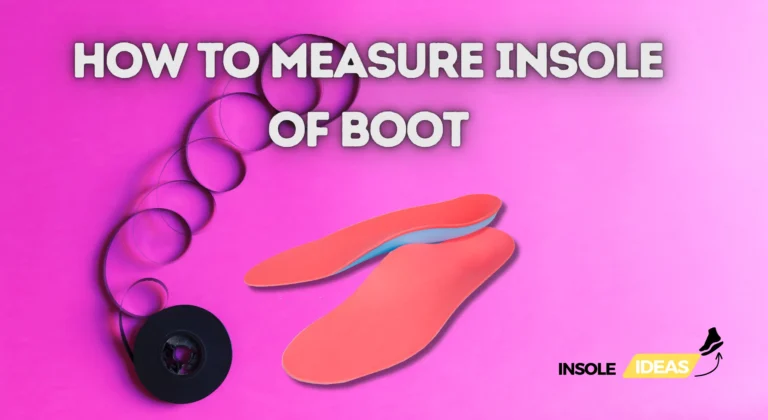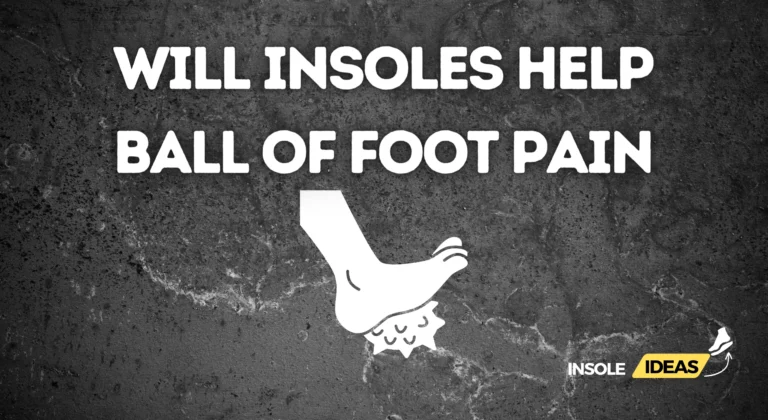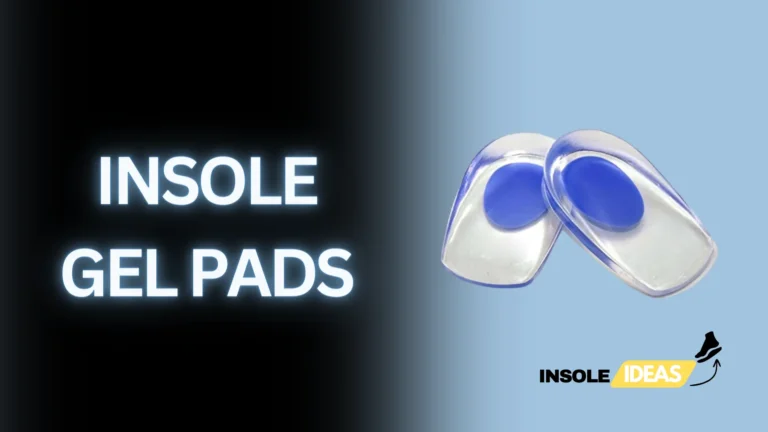Unveiling the Mystery: Can Insoles Truly Make Shoes Smaller?
Shoe sizing is a perpetual challenge, often leading to discomfort and the eternal quest for the perfect fit. Insoles, designed to enhance comfort and support, purportedly offer a solution to this quandary. But can these seemingly humble inserts genuinely alter the size of our shoes?
Definition of Insoles
Insoles, also known as footbeds or inner soles, are removable inserts placed inside shoes to provide additional support, cushioning, and sometimes to modify the fit. They come in various materials like foam, gel, or specialized orthotics, offering a spectrum of functionalities beyond mere padding.
Common Shoe Sizing Dilemmas
The universality of shoe sizes is a myth; variations exist across brands, styles, and even individual foot shapes. This inconsistency often results in shoes feeling too loose, tight, or uncomfortable, prompting the exploration of alternatives like insoles to achieve a more favorable fit.
Understanding Insole Functionality
Role in Foot Support
Insoles play a pivotal role in foot support by redistributing pressure, alleviating pain, and correcting biomechanical imbalances. They provide arch support, cushioning, and shock absorption, contributing to overall foot health and comfort.
Impact on Shoe Fit
Beyond enhancing comfort, insoles can significantly impact shoe fit. They occupy space within the shoe, potentially reducing the internal volume and altering how the foot interacts with the footwear, affecting how the shoe fits.
The Claims Manufacturers’ Assertions
Insole manufacturers often claim their products can modify shoe size by improving fit, reducing movement within the shoe, and creating a snugger feel. These assertions are rooted in the design and intended functionality of the insoles.
How Insoles Alter Shoe Size
Mechanics of Size Adjustment
Insoles modify shoe size by occupying space within the shoe, redistributing pressure points, and altering the foot-to-shoe interface. They can effectively reduce the internal volume, making the shoe feel smaller or more snug.
Materials and Design
The materials and design of insoles influence their impact on shoe size. Thicker insoles or those with pronounced arch supports may take up more space, potentially making the shoe feel smaller, while thinner, more flexible inserts might subtly modify the fit without drastically changing the size.
Advantages of Using Insoles
Insoles offer several advantages, making them a popular choice for foot care and comfort.
Comfort Enhancement
The instant comfort boost is one of the main advantages of using insoles. They alleviate pressure on sensitive areas, reduce fatigue, and provide a cushioned layer between the feet and the ground, ensuring a more pleasant walking or standing experience.
Foot Health Benefits
Beyond comfort, insoles contribute to overall foot health. They can help prevent and alleviate common foot problems like plantar fasciitis, heel pain, and arch issues. Properly supportive insoles promote better alignment, reducing strain on muscles and tendons.
Potential Drawbacks
While insoles offer numerous advantages, there are potential drawbacks to consider.
Impact on Shoe Durability
Inserting insoles might impact the longevity of shoes. The added layer can alter the fit, potentially causing increased wear and tear on certain parts of the shoe, affecting its overall durability.Inserting insoles might impact the longevity of shoes. The added layer can alter the fit, potentially causing increased wear and tear on certain parts of the shoe, affecting its overall durability.
Discomfort Issues
In some cases, individuals might experience discomfort when using insoles, especially if the insoles aren’t properly fitted or if they don’t suit the foot’s specific needs. This discomfort could range from minor irritation to exacerbating existing foot problems.
DIY Insole Adjustments
Making adjustments to insoles can improve their effectiveness and comfort.
Trimming Techniques
Trimming excess material from insoles allows for a more customized fit. Following manufacturer guidelines, carefully trimming edges can help insoles fit better within shoes, preventing overcrowding or discomfort.
Insertion Tips
Properly inserting insoles is crucial for their efficacy. Ensuring they lie flat and align correctly within the shoe prevents slippage and maximizes their supportive benefits.
Insoles vs. Shoe Size Alternatives
Wearing comfortable footwear is essential for maintaining foot health. Sometimes, achieving that ideal fit involves considering alternatives beyond just changing shoe sizes. Exploring the effectiveness of insoles against other solutions like thicker socks or shoe stretching can significantly impact comfort levels.
Insoles vs. Thicker Socks
Thicker socks are a commonly adopted solution for improving shoe fit. While they can add padding and alter the feel within the shoe, they might not address specific foot support needs. Insoles, on the other hand, offer targeted support, redistributing pressure and providing cushioning where it’s most needed. Their versatility makes them a preferred choice for addressing various foot-related issues.
Insoles vs. Shoe Stretching
Shoe stretching involves expanding the shoe’s material to accommodate the foot better. However, this method might not offer the same level of customization and support that insoles do. Insoles are designed with specific arch support, cushioning, and corrective features that cater to individual foot needs, making them a more precise solution compared to general shoe stretching.
Shopping for Insoles
Choosing the right insoles involves considering several factors beyond mere size. Understanding how to navigate through available options ensures you find the perfect match for your footwear needs.
Finding the Right Fit
It takes more than just matching the insole size to your shoe to find the perfect fit. Consider the arch type, foot shape, and intended purpose (such as athletic use or everyday comfort). Testing insoles for comfort and support before making a purchase is essential to ensure they meet your specific requirements.
Reading Product Labels
Product labels contain valuable information regarding the insoles’ features, materials used, and intended use. Understanding these details can help in selecting insoles that cater to your foot’s specific needs. Look for terms like “arch support,” “gel cushioning,” or “moisture-wicking” to identify the features aligning with your requirements.
Insoles in Fashion
Insoles are not merely functional; they also contribute to fashion and style, catering to those seeking both comfort and trendiness in their footwear accessories.
Stylish Insole Options
Manufacturers now offer a range of stylish insoles, presenting options beyond the traditional beige or black. From vibrant colors to patterns and designs, these insoles allow wearers to express their personality while ensuring comfort.
Celebrity Endorsements
Celebrity endorsements often highlight the importance of insoles in footwear. Many celebrities advocate for specific insole brands, emphasizing their role in providing comfort and support while staying stylish. Their endorsements influence trends and choices, making insoles a fashionable accessory alongside their functional benefits.
User Tips and Hacks
Maximizing the benefits of insoles involves understanding how to use them effectively and creatively. Implementing specific tips and hacks can significantly enhance the overall experience and utility of insoles.
Maximizing Insole Benefits
To make the most of insoles, ensure they fit properly within your shoes. Additionally, consider using them in various footwear types, from athletic shoes to dress shoes, to experience their benefits across different activities. Regularly clean and air out insoles to maintain hygiene and efficacy.
Innovative Tricks for Sizing Down
While insoles aren’t intended for shoe size reduction, they can subtly adjust the fit. For a slightly tighter fit, opt for thinner insoles or those designed for minimal padding. However, it’s essential not to force a significant reduction in size with insoles as it can compromise comfort and foot health.
Potential Risks
Understanding potential risks associated with insoles is essential to make informed decisions about their usage and maintenance.
Allergic Reactions
Certain insole materials may cause allergic responses in some people. It’s crucial to be aware of any potential allergies and choose insoles made from hypoallergenic materials if sensitivity is a concern.
Long-term Consequences
Extended use of improperly fitting insoles or using them inappropriately could lead to foot discomfort or exacerbate existing foot issues. It’s important to monitor any changes in comfort or foot health when using insoles regularly.
Summary
Summarizing the key takeaways and recommendations regarding insoles helps reinforce their importance and application in daily life.
Key Takeaways
Insoles offer benefits beyond addressing foot pain, providing comfort, support, and alignment correction. They’re suitable for various footwear and individuals, not just those with foot issues. Proper maintenance and fit are crucial for optimal effectiveness.
Insole Recommendations
When choosing insoles, consider ones that cater to your specific needs, whether for high-impact activities, arch support, or general comfort. Opt for quality materials and ensure they fit well within your shoes without altering the shoe size significantly.
FAQs
Insoles, when properly selected and used, shouldn’t damage shoes. However, using insoles significantly larger than the shoe size or made from abrasive materials might cause wear and tear.
The replacement frequency depends on usage and wear. Generally, it’s advisable to replace insoles every six months to a year, or when signs of wear, reduced support, or discomfort arise.
Insoles are versatile and can enhance comfort and support in various shoe types, from sneakers to formal footwear. However, the effectiveness might vary based on the shoe’s design and the specific purpose of the insole.




